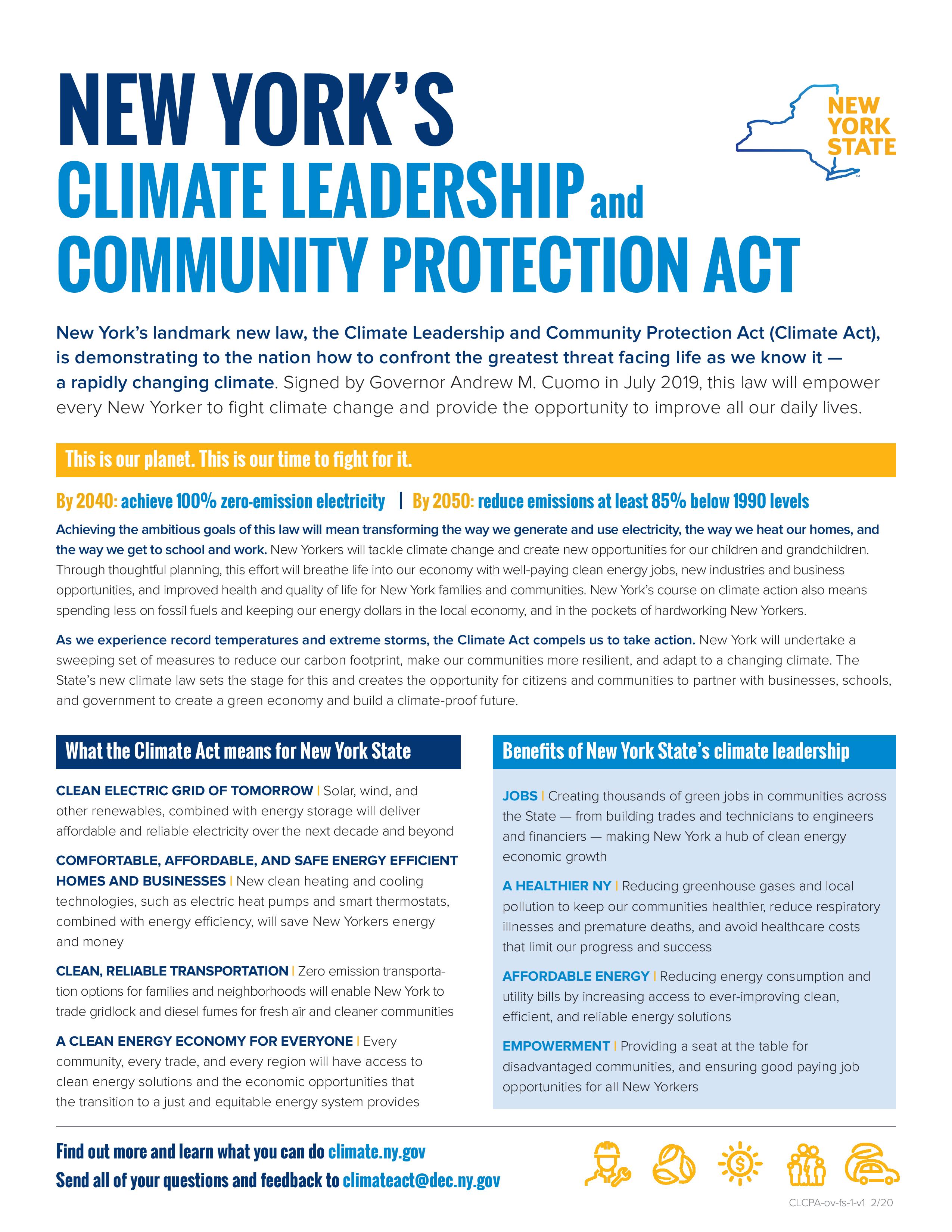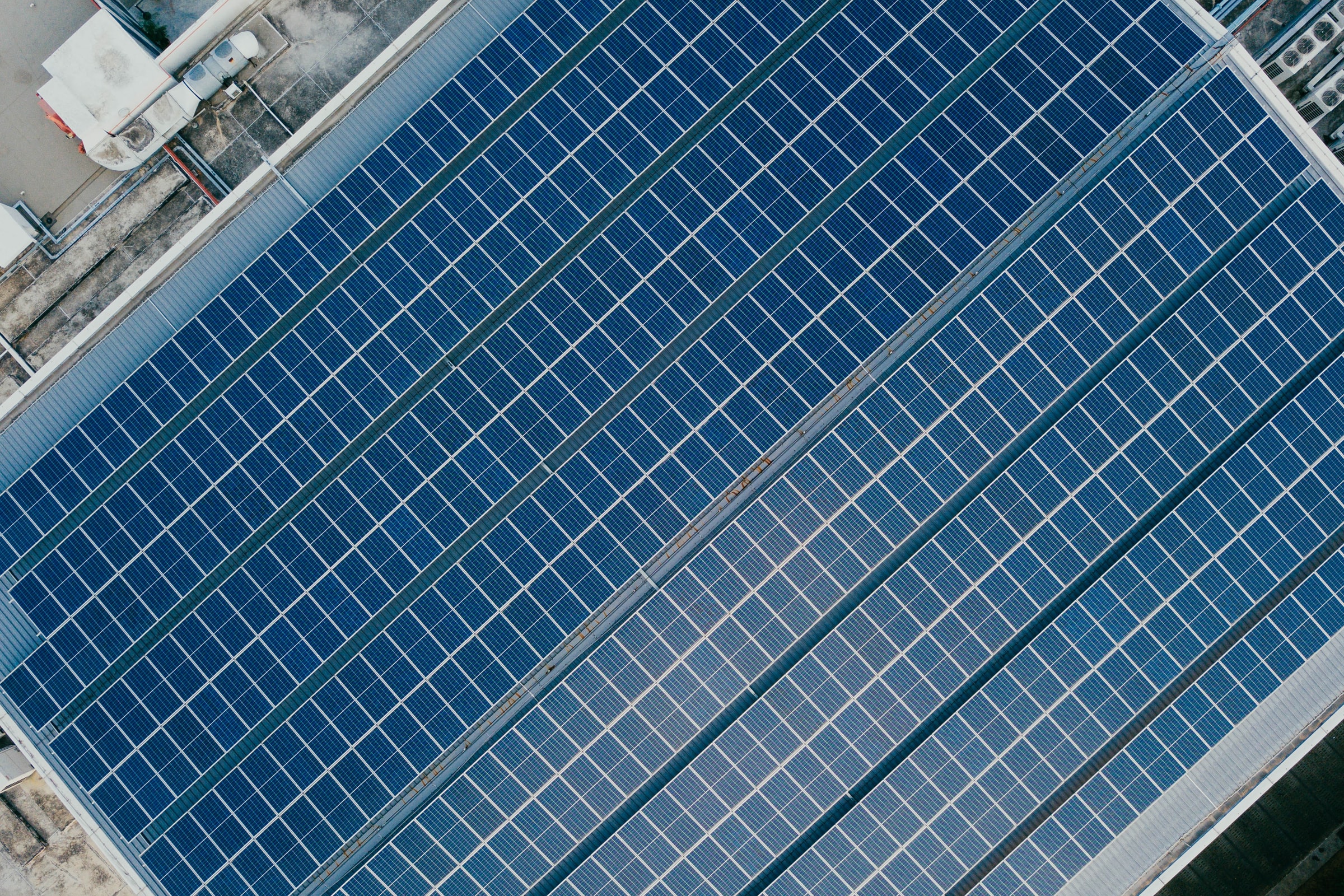With the New York Climate Leadership and Community Protection Act (CLCPA) having passed in 2019, the state is mandated to meet some of the most rigorous climate standards in the world in the coming years. The successful adoption of climate-friendly practices and the necessary deployment of renewable energy projects will be vital in achieving these goals. With this in mind, the New York Climate Action Council, advised by the Power Generation Panel, is required to put forward recommendations based on these CLCPA targets.
What is the New York Climate Leadership and Community Protection Act?
The New York Climate Leadership and Community Protection Act (CLCPA), a nation-leading piece of legislation passed in 2019, has set out some of the most ambitious climate targets not just in the United States but in the world. Key targets of the CLCPA include:
- 85% Reduction in GHG Emissions by 2050
- 100% Zero-emission Electricity by 2040
- 70% Renewable Energy by 2030
- 9,000 MW of Offshore Wind by 2035
- 3,000 MW of Energy Storage by 2030
- 6,000 MW of Solar by 2025
- 22 Million Tons of Carbon Reduction through Energy Efficiency & Electrification
- Reinvestment in Disadvantaged Communities
Further details concerning the CLCPA will emerge in 2024 when the New York Department of Environmental Conservation (DEC) releases regulations based on the scoping plan submitted to the Governor and legislative leaders by the Climate Action Council. This scoping plan from the NYS Climate Action Council will take public feedback into account.
For further information about CLCPA targets and what the Act means for New Yorkers, please consult the official fact sheet, which you can view below or download here.
What is the New York State Climate Action Council on Power Generation?
The purpose of the Power Generation Panel is to advise the New York State Climate Action Council on recommendations that will help NY to achieve the targets outlined as part of the CLCPA, including 70% renewable electricity by 2030 and 100% emissions-free power by 2040. The Power Generation Panel should provide recommendations on these key goals and everything else mandated by the CLCPA. These recommendations will contribute to the development of the regulatory mechanisms required to overhaul New York’s power system—a necessary step in meeting the Act’s mandate.
Below are some likely recommendations from the Power Generation Panel that will assist the NYS Climate Action Council in pushing the state toward its clean energy targets.
Building Renewable Energy Projects
It is essential that renewable energy projects are developed, constructed, and implemented as soon as possible in order to begin producing sufficient clean energy in order to meet the targets mandated by the CLCPA. The necessary amount of renewable energy generation will involve:
- Rooftop solar
- Grid-scale solar
- Land-based wind
- Offshore wind
- Capacity improvements at existing small hydroelectric power plants
New York State can ensure sufficient deployment of new renewable energy projects by:
- Awarding state contracts through the Clean Energy Standard program. These state contracts will need to be awarded at a rate of 4,500 annual million MWh of new contracts per year from 2021 to 2026 for land-based renewables.
- Refining the permitting process. This process should be rigorous, efficient, and timely, and adequate staff must be hired for the Office of Renewable Energy Siting in order to ensure this.
- Working with the New York Independent System Operator (NYISO) to expedite the interconnection process.
- Publishing a standardized method for the assessment and taxation of both wind and solar projects.
- Applying pressure to the federal government to auction leases for new Offshore Wind Energy Areas in federal waters.
Transmission Infrastructure & Climate
The state of New York must study, plan, and invest in transmission infrastructure. This will be a vital aspect in the pursuit of the CLCPA targets. Development of transmission infrastructure will require:
- Both an understanding and pursuit of optimal levels of generation vs. storage and transmission investment.
- Construction of “no regrets” transmission projects that are needed to make NY 100% emissions-free by 2040.
- The creation of Renewable Energy Zones via investment in collector locations.
- Authorization for utilities to accelerate investment in local systems. This investment will facilitate the development of renewable energy while also ensuring safety and resiliency.
Replacing Oil & Gas Plants with 100% Renewables
New York must ban the permitting, siting, and construction of all new fossil fuel-fired power plants, while also facilitating the phasing out of existing gas and oil power plants. In order to achieve this, the state should:
- Ban permitting, licencing, siting, and construction of all new fossil fuel-fired power plants.
- Direct the Department of Environmental Conservation (DEC) to promote such regulations and amend existing air operating permits to establish an enforceable end date of 2040 for greenhouse gas (GHG) emissions in the state.
- Direct the DEC to phase down electric sector emissions via a targeted approach. The sector’s target could be established in 2030, stepping down at three-year intervals to guarantee a 100% decarbonized electric grid by 2040.
- Amend DEC regulations for all sources, both new and existing. New sources should see the carbon emissions limit set at a level which prohibits new gas plants, while existing sources should see emissions standards gradually ratcheting down over time to ensure that the most significant polluters would close first.
- Direct the New York Public Service Commission (PSC) to advance a comprehensive gas transition docket by the end of this year (2021). In conjunction with the progression of this docket, local transmission owners and the NYISO should be directed to conduct local and bulk reliability analyses in order to identify transmission and distribution systems needs which will arise when fossil fuel plants cease operating.
- Protect consumers.
- Provide a glide path for workers & communities.
- Support community solar & solar access for all.
- Achieve efficiency.
- Establishing a distributed generation (e.g. rooftop solar, community solar) goal beyond the CLCPA-mandated 6,000 MW by 2030. Distributed generation offers equity and resilience benefits, and so it is key that NYS remains committed to rooftop & community solar’s potential in order to meet the 70% and 100% mandates of the CLCPA.
- Pursuing all feasible energy efficiency and load flexibility solutions, particularly downstate, with an emphasis on energy efficiency, load flexibility, and DERs in environmental justice communities. Environmental justice communities should have access to, and the possibility of ownership of, clean energy solutions. Additionally, grid interactive buildings and managed EV charging stations should be prioritized to ensure that these technologies can be appropriately scaled in the near future.
- Protecting consumers when it comes to the costs of this energy transition. For example:
- Increasing financial assistance for New York’s most vulnerable so they can afford their energy bills.
- Integrating competition in order to get the best price.
- Avoiding unnecessary costs such as minimum offer price rules applied to renewable energy projects by the Federal Energy Regulatory Commission (FERC).
- Ensuring geographic equity when it comes to the timing & location of fossil fuel plant closures, as well as a just and equitable transition for workers & communities affected by these plant closures.
- Ensuring clear benefits for the communities which host these renewable energy projects.
- Identifying and overcoming barriers to the distribution of solar and storage in the New York City metropolitan area.
- Remove immediate barriers to the scaling of energy storage.
- Set yearly energy storage targets.
- Increase the statewide energy storage target to 15 GW by 2030.
- Provide flexible financing mechanisms in order to achieve scale and rapidly advance long-duration energy storage in NY.

Just & Equitable Clean Energy Transition
It is vital that NYS remains committed to equity and cost-effectiveness in its pursuit of CLCPA targets. Sufficient measures must be taken to:
These important measures can be achieved through the following approaches:
Planning for Clean Energy Transition
The implementation and growth of energy storage is another necessary step in pursuing, and ultimately meeting, the overall targets of the CLCPA. The PSC, with the support of NYSERDA, should be directed to open a standalone storage docket in 2021, including within this process efforts to:
To be part of the solar revolution, reach out to YSG Solar. YSG has been working in the New York solar sector for over ten years, contributing significantly to the growth of clean energy in the state, and we’re eager to contribute even more as NY strives toward these ambitious goals in the coming years. To get in touch, send us an email or call at 212.389.9215 today.
YSG Solar is a project development vehicle responsible for commoditizing energy infrastructure projects. We work with long-term owners and operators to provide clean energy assets with stable, predictable cash flows. YSG's market focus is distributed generation and utility-scale projects located within North America.
Sources:

